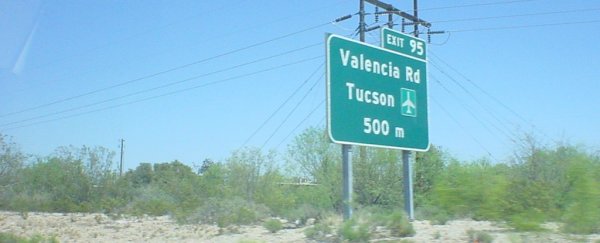America's love affair with the imperial system is a bit of a mess. The soda is in litres, the milk is in gallons, and just one highway in Arizona uses exclusively metres and kilometres.
But how did it get this way?
Well, a new video, by YouTube channel Half as Interesting, explains the complicated reasons why the US is still (mostly) using imperial.

"During decolonisation, all the former British Empire countries were really excited to not be British, and as part of that, they were really excited to ditch the British Imperial System," Sam Denby, from Half As Interesting, explains in the video.
In 1793, America was pretty excited to move to one system of measurement too.
Secretary of State at the time, Thomas Jefferson, even sent a letter to France to ask them for a kilogram, to assess it to be the new standard of weighing things.
But, the ship carrying the scientist who was tasked to bring it over, Joseph Dombey, was blown off course by a massive storm.
He and the kilogram ended up in the Caribbean Sea, where they were captured by pirates and died in captivity.
Lots of things happened in between, but interestingly enough, by 1975, the US was still using imperial units.
And although you wouldn't know it today, the country was still trying to change over to metric. That year, congress passed a law saying that you can choose which you want to use, either metric or imperial.
And some places, companies and roads switched.
Well, one road, in Arizona, called Interstate 19. A 101-kilometre-long highway between Tucson and the Mexican border.
As the video explains above, the signage in kilometres on that road was actually started as an experiment, but they never got around to switching it back to imperial once it was clear the rest of the country wasn't catching on.
So there you have it. If you want to learn more about why the US still hasn't adopted the metric system, check out this article here.
